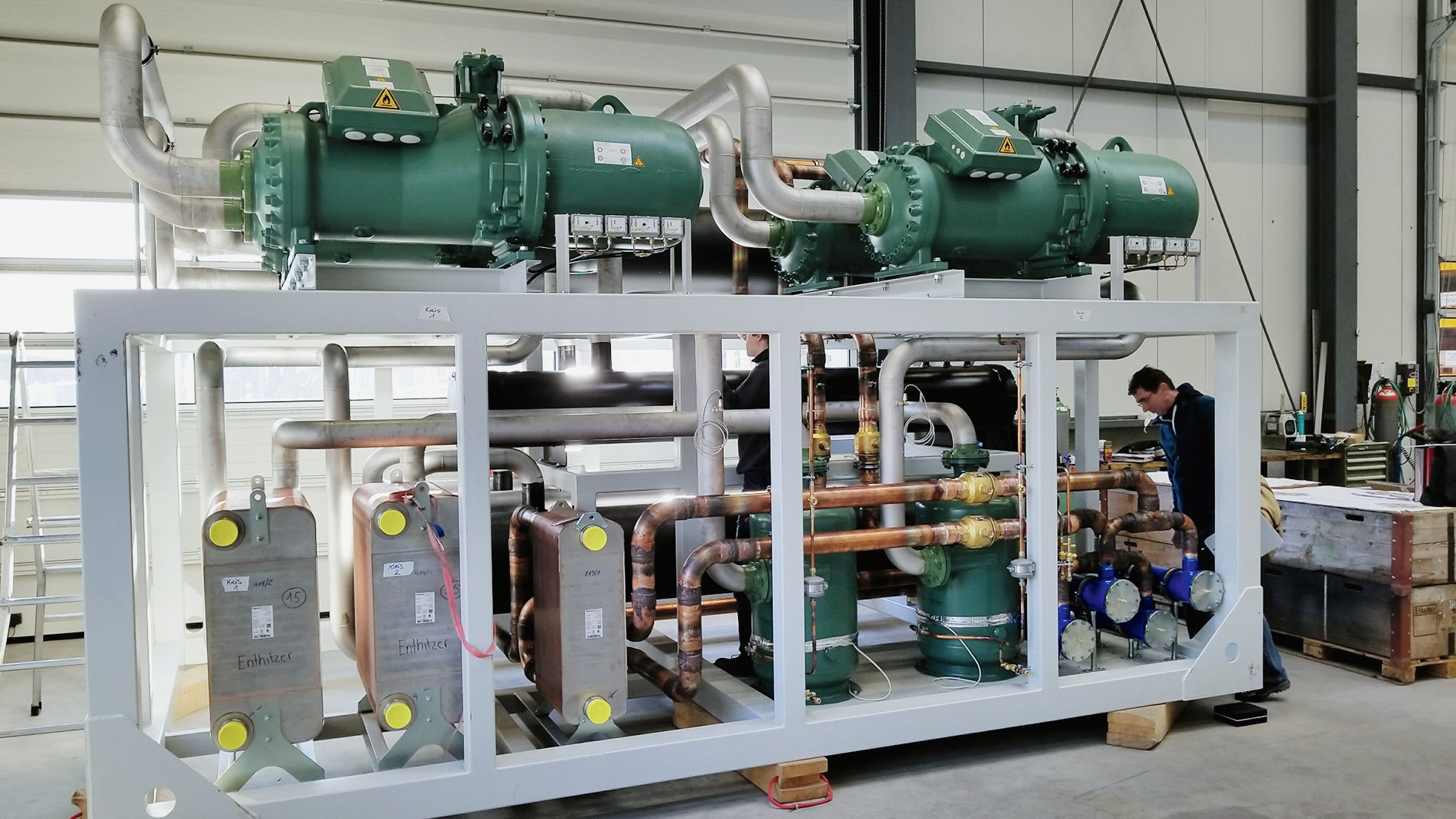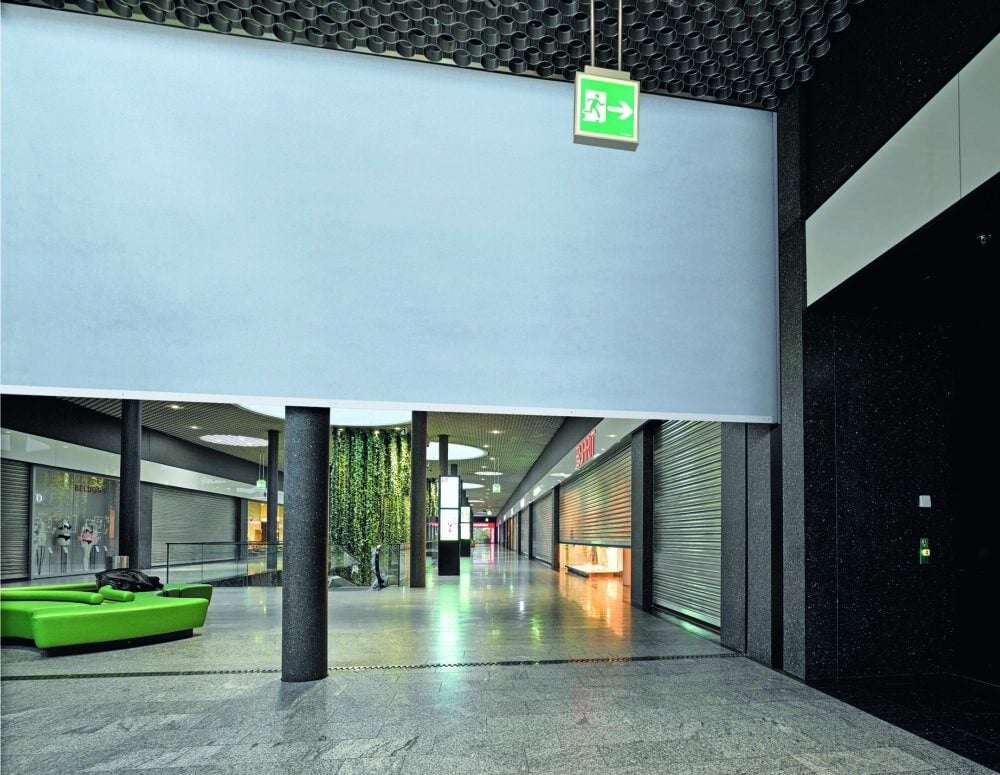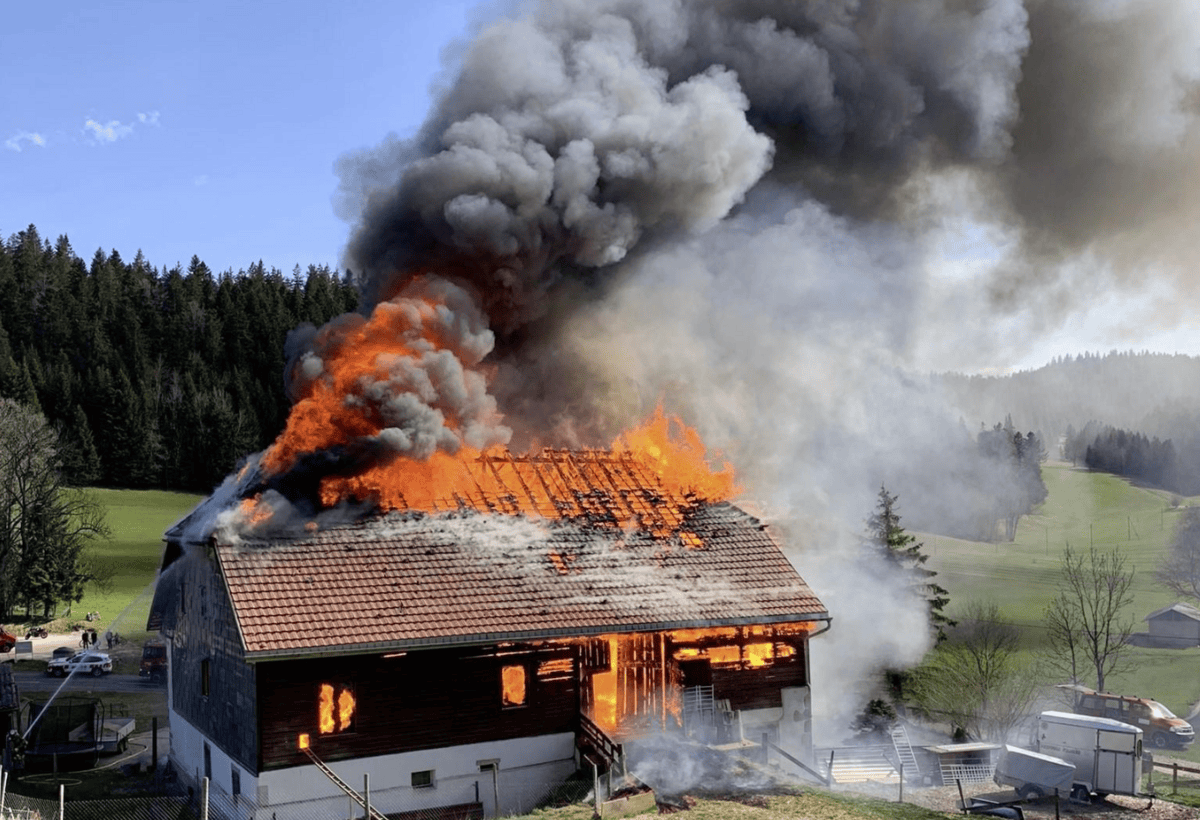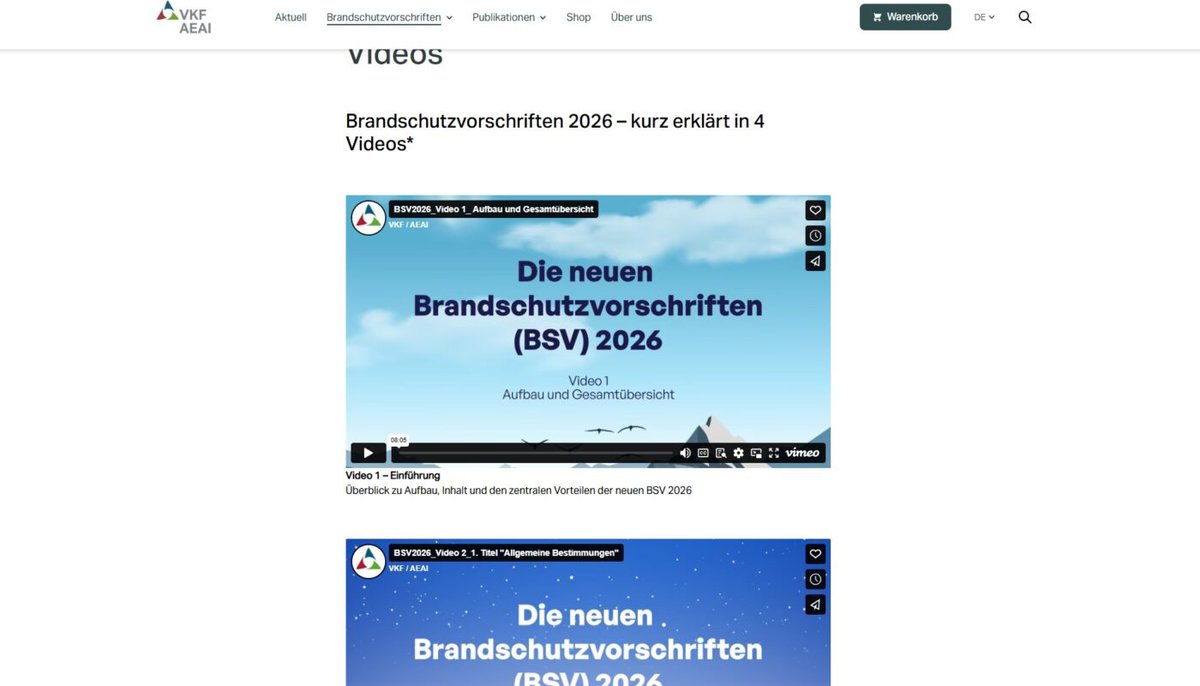Safety measures for natural refrigerants
Ozone-depleting refrigerants as well as larger refrigeration systems and heat pumps with refrigerants stable in the air are generally prohibited. Natural refrigerants are available as an alternative. Their ecological advantages are offset by fire, explosion and health hazards. Therefore, extensive technical and organizational requirements must be observed.

According to the Chemical Risk Reduction Ordinance, natural refrigerants such as propane, ammonia (NH3) or partially halogenated fluoro-olefins (HFO) with a low greenhouse effect must be used for larger refrigeration systems and heat pumps (ChemRRV Anh. 2.10). These refrigerants are more environmentally friendly than the chlorofluorocarbons (CFCs) used in the past, but are hazardous to health and flammable. With their increasing use, numerous requirements from the areas of environmental protection, fire protection, occupational safety and health protection have recently been specified for the design of machine rooms and the operation of such systems in order to meet general protection goals. The regulations are extensive and overlap thematically. Some of them are addressed below.
Importance of standards
Companies subject to the Labor Act must take all protective measures to prevent occupational accidents and illnesses that comply with recognized rules (ArG Art. 6). Recognized rules are documented, generally accepted, tried and tested provisions relating to technology, organization and behavior that are based on a risk-oriented approach. Standards are such recognized rules, as are guidelines issued by Ekas or checklists issued by Suva. SN EN 378 Refrigeration systems and heat pumps specifies the safety and environmental requirements and is binding as a Swiss standard.
What does the Major Accidents Ordinance say?
The population and the environment are to be protected from serious damage as a result of major accidents. Plants that exceed the quantity thresholds for substances are subject to the Ordinance on Major Accidents (StFV). For ammonia, this threshold is 2000 kilograms. In individual cases, the enforcement authority may subject establishments that do not exceed the quantity threshold to the Ordinance on Major Accidents if the potential danger could seriously harm the population or the environment (StFV Art. 1 Para. 3). A realistic release and dispersion scenario must be defined for the assessment. If, for example, the release rate for ammonia is above 1 kg/s and more than 35 people are present outdoors in the hazard area, it is recommended that the plant be subject to the StFV.
Fire protection measures
The specifications in EN 378 also specify fire protection measures. Machine rooms and their doors, for example, must have a fire resistance of at least one hour and be tight. Because machine rooms with flammable refrigerants must have a door leading directly into the open air, new systems in basements are difficult to implement.
In trapped machine rooms, installations cannot be replaced by those with flammable refrigerants. Although legally constructed buildings and installations are protected in their existence, they must be adapted proportionately if changes or extensions are made or if the danger to persons is particularly great (VKF BN Art. 2).
The employer is further obliged to take all measures that are applicable according to the state of the art (ArG Art. 6). With the progress of technology, the protective measures must also be adapted, especially if they prove to be insufficient in the course of time. When replacing existing installations, the current requirements must therefore be taken into account, despite the protection of existing installations.
Explosion risks
In EN 378, the refrigerants propane, ammonia or HFO are classified as flammable. Machine rooms are subsequently to be divided into potentially explosive atmospheres for which measures must be taken to protect workers. Suitable measures must be worked out for each individual case in the explosion protection concept and recorded in the explosion protection document (Suva leaflet 2153). Equipment may only be put into operation if its safe use has been demonstrated in the explosion protection document. The explosion protection document specifies, among other things,
- that the explosion risks have been identified and subjected to an assessment; - that appropriate measures are taken;
- which areas have been divided into zones;
- that precautions have been taken for the safe use of work equipment.
Special measures must be specified and documented in a permit if hot work is carried out in machine rooms or equipment that has already been filled is installed.
Planning and realization of plants
In accordance with the large number of requirements, numerous specialist agencies are involved in the licensing procedure for plants. Explosion and health protection for employees is regulated by labor law and therefore falls under the responsibility of the labor inspectorates and not the fire protection authority. The building permit procedure does not guarantee compliance with all regulations. The employer is responsible for implementing the explosion protection measures. Even if the plant is not subject to the accident prevention or plan approval procedure and there is no systematic inspection by authorities, the plant owner will assess compliance in his own interest, because he is liable for damages caused by defects (OR Art. 58). Furthermore, anyone who causes an explosion or harms persons due to negligent disregard of specifications can be punished with a fine or imprisonment of up to three years (StGB Art. 117, 125, 223).
Risk assessment
The potential hazards posed by refrigerants to persons, property and the environment must be reduced to a minimum. Refrigerants must therefore not enter neighboring rooms or drainage systems, and escaping gas must be safely discharged to the outside. For the assessment of hazards, unfavorable scenarios shall be investigated, such as continuous minor release due to small leaks or sudden and complete release of refrigerant due to failure. Consideration shall be given to whether there is an explosion hazard or a health hazard from the release. The area may extend for more than a hundred meters. The basis of the assessment is not only the actual use of the area, but also the permissible use. If safety is not guaranteed, safety can be improved by optimizing the system, increasing the air volume of the emergency ventilation or changing the point of release.
Emergency measures
If refrigerant escapes, detectors must trigger an alarm and activate the mechanical emergency ventilation. If ten percent of the lower explosion limit is exceeded, all electrical installations in the machine room that are not adequately protected against explosion must be automatically de-energized. EN 378, Ekas guideline 6507 and Suva leaflet 2153 specify different ranges for the alarm values. According to the specifications of Ekas Directive 6507, gas leakage into the open air should be prevented in the event of refrigerant leakage; in contrast, according to EN 378, the refrigerant must be discharged into the open air. Since a sudden and complete release of the refrigerant is expected to cause an increase in pressure, at which the gas cannot be retained in the machine room, the controlled and hazard-free release is to be preferred. In addition to alarm equipment for rescue personnel, eye and full-body shower and other first aid material must be available, depending on the type of refrigerant used. The necessary emergency measures must be clearly described and the employees concerned must be instructed.
Conclusion
The requirements and regulations for systems with flammable refrigerants are extensive. With the publication of the revised EN 378 in 2017, measures for the realization of existing protection targets were specified. Experience has shown that the specifications are often not taken into account in time. Without dispersion modeling and hazard assessment, safety cannot be guaranteed. The earlier the requirements are incorporated into the planning, the easier it is to implement the necessary measures. In any case, the use of natural refrigerants requires elaborate technical and organizational measures to ensure safety.
Gabriel Caduff
Dr. sc. techn., Dipl. Betr.- u. Prod.-Ing. ETH, Safety Engineer EKAS Owner Tensor Ingenius GmbH









